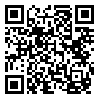Volume 76, Issue 4 (July 2018)
Tehran Univ Med J 2018, 76(4): 277-282 |
Back to browse issues page
Download citation:
BibTeX | RIS | EndNote | Medlars | ProCite | Reference Manager | RefWorks
Send citation to:



BibTeX | RIS | EndNote | Medlars | ProCite | Reference Manager | RefWorks
Send citation to:
Mosadeghrad A M, Mirzaee N, Afshari M, Darrudi A. The impact of health transformation plan on health services fees: brief report. Tehran Univ Med J 2018; 76 (4) :277-282
URL: http://tumj.tums.ac.ir/article-1-8897-en.html
URL: http://tumj.tums.ac.ir/article-1-8897-en.html
1- Department of Health Management and Economics, School of Public Health, Health Information Management Research Center, Tehran University of Medical Sciences, Tehran, Iran.
2- Department of Health Management and Economics, School of Public Health, Tehran University of Medical Sciences, Tehran, Iran.
3- Maragheh University of Medical Sciences, Maragheh, Iran. ,sadaf_af2007@yahoo.com
2- Department of Health Management and Economics, School of Public Health, Tehran University of Medical Sciences, Tehran, Iran.
3- Maragheh University of Medical Sciences, Maragheh, Iran. ,
Abstract: (5845 Views)
Background: Tariff setting in healthcare is an important control knob affecting the quality, access and cost of services. As part of Iran Health Transformation Plan (HTP) in 2014, the relative value of health care and services was increased to motivate healthcare providers to deliver high quality services. This study aimed to examine the impact of HTP on health services tariffs.
Methods: This descriptive and cross-sectional study used the data from California Tariff Book (2013 edition) and the new relative value book (2016 edition). The weighted average of the relative value of the anesthetic and surgical services in both books was calculated and compared.
Results: The California book and the new relative value book had 5281 and 3448 service codes respectively in 13 major medical specialties (34.7 percent reduction of service codes in the new tariff book). Overall, 64985.9 K and 125133.6 K were considered in the California book and the new relative value book (92.6% growth). The California book and the new relative value book considered 25,976 K and 22,307 K for anesthesia services, respectively in those 13 medical specialties (14.1% reduction). The HTP has increased the relative value of healthcare services tariff by 1.9 times in average.
Conclusion: The HTP has doubled the tariff of healthcare services. A rise in the relative value of healthcare services has incurred financial burden on Iranian public health insurance companies and made it difficult to finance health system of the country. A sustainable health financing system should be developed as well a change should be applied in provider payment system to control the cost and increase the health system efficiency.
Methods: This descriptive and cross-sectional study used the data from California Tariff Book (2013 edition) and the new relative value book (2016 edition). The weighted average of the relative value of the anesthetic and surgical services in both books was calculated and compared.
Results: The California book and the new relative value book had 5281 and 3448 service codes respectively in 13 major medical specialties (34.7 percent reduction of service codes in the new tariff book). Overall, 64985.9 K and 125133.6 K were considered in the California book and the new relative value book (92.6% growth). The California book and the new relative value book considered 25,976 K and 22,307 K for anesthesia services, respectively in those 13 medical specialties (14.1% reduction). The HTP has increased the relative value of healthcare services tariff by 1.9 times in average.
Conclusion: The HTP has doubled the tariff of healthcare services. A rise in the relative value of healthcare services has incurred financial burden on Iranian public health insurance companies and made it difficult to finance health system of the country. A sustainable health financing system should be developed as well a change should be applied in provider payment system to control the cost and increase the health system efficiency.
Type of Study: Original Article |
Send email to the article author
| Rights and permissions | |
 |
This work is licensed under a Creative Commons Attribution-NonCommercial 4.0 International License. |





